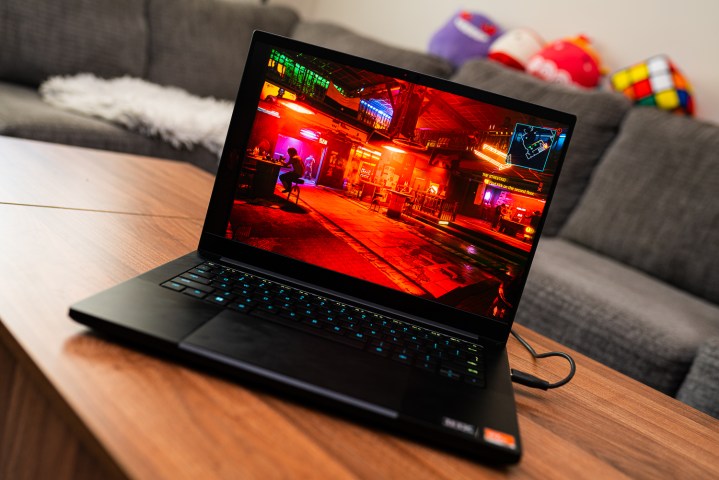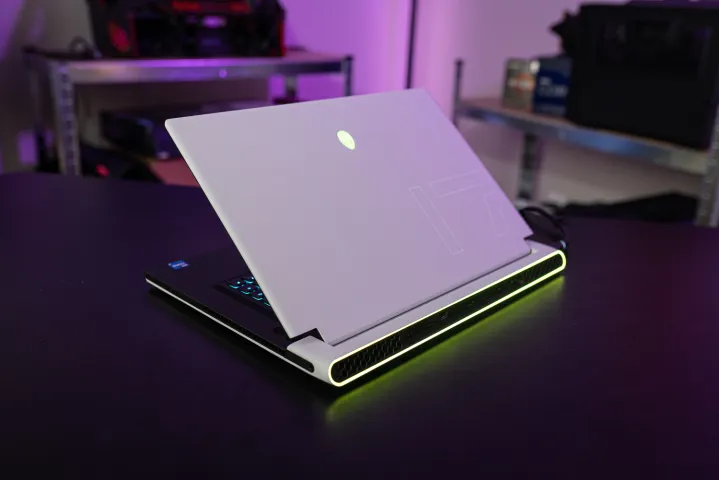I’ve had a few gaming laptops in my life, but I really can’t see myself ever buying another one — even though there are definitely times when I could use one. That’s not to throw shade to some of the best gaming laptops, because I know those are great for those who can appreciate them. I simply can’t bring myself to trust another one again.
I’m not against buying a laptop for gaming, but here are some of the reasons I’ve continued to resist picking one for myself.
Once burned, twice shy

The gaming laptops I’ve had were, for the most part, a hot mess — emphasis on “hot.” I was always more of a desktop gaming fan, but at certain periods in my life, I’ve had a laptop instead of, or in addition to, a gaming PC. A couple of these laptops remain fresh in my memory, serving as reminders as to why I don’t want to get burned again. Literally.
One of the biggest advantages of a desktop over a laptop is the fact that thermal throttling is much less likely to happen. Even in a smaller PC case, your components still get a lot of airflow. Provided that you pick the right PC build and a solid cooling solution, heat shouldn’t be a problem unless you’re into overclocking. That’s just not the case with laptops.
A small chassis stuffed to the brim with gaming components, including a discrete GPU and a power-hungry processor, means a lot of heat, and that is exactly why I’m staying far away from gaming laptops. All the ones I’ve had in the past have had overheating issues.
You might tell me to get a laptop cooling pad, and I have — it was pretty much a necessity for me to be able to use the laptop at any serious capacity. Even then, I was faced with throttling, poor performance, and, worst of all, shutdowns. A laptop I had in 2014 would shut down within a minute of booting up if it didn’t have a cooling pad, and even if it did, it still struggled.
I reached the end of the line when my old Asus laptop would only stay on if I had a hair dryer blowing into the side fans on a cool setting at all times. Obviously, I didn’t keep that up for long, but it was enough to put me off of gaming laptops for a long time. Imagine trying to game or do any work with a hair dryer blowing next to you the whole time … let’s just say that it wasn’t ideal, but I was in-between desktops and had to stick it out for a while.
These are extreme cases that I’m describing above, of course, and the laptops weren’t quite this bad out of the box. However, over time, things got progressively worse until reaching a point where repairs would have made no sense.
One thing to note, though, is that even if the overheating didn’t always lead to shutdowns, every single laptop I’ve owned had some issues with thermal throttling during gaming. Seeing as I tend to play a lot of games in my free time, that makes it a no-go for me. Few things are more frustrating than seeing your frames per second (fps) drop down to between 5 and 10 because your laptop is having a hard time.
The price doesn’t add up

My second reason for avoiding gaming laptops is purely practical, and my resolve has only strengthened over time as these notebooks grew more and more expensive. As someone who enjoys PC building and keeps tabs on the prices of many components, I really don’t think that a gaming laptop can ever provide decent value for the money when compared with a proper desktop.
Some of the most recent laptops are notorious for this. Depending on the brand and the exact specifications, you can’t really get a solid gaming laptop for less than $1,500 to $2,000 these days, and high-end options can cost you significantly more. Meanwhile, with a $2,000 budget, you can build yourself a PC with one of the best graphics cards, such as the RTX 4070 Ti or the 7800 XT. In the case of the latter, you’ll still have money left over for a monitor.
Laptops with Nvidia’s RTX 40-series GPUs are especially pricey. Let’s take the RTX 4070 as an example, which is a middle-of-the-pack kind of GPU both in its desktop and laptop versions. Laptops sporting this graphics card range from $1,600 to well over $2,300. Meanwhile, the desktop model costs $550 to $650 and shows a commanding lead over its laptop counterpart. The same can be said of any other component: The desktop version is more powerful, but also cheaper. That doesn’t mean cheap — Nvidia has a pretty outrageous pricing strategy — but you’re still getting more value for the money here.
Of course, there are reasons why someone might choose a gaming laptop over a desktop and still come out on top money-wise. For one, a laptop is good to go from the moment you buy it, so you won’t need a monitor, a keyboard, or a mouse the way you would with a PC. (Although, who can really enjoy gaming on a trackpad? I digress.)
There’s also the portability factor, which is mostly why these laptops are so expensive in comparison. If you travel a lot, a laptop might be your only option to enjoy games on the go. But high-end models pretty much need to stay plugged in most of the time anyway, due to short battery life and limited performance when running in power-saving mode.
For me, those factors still don’t make gaming laptops a worthwhile purchase, but I realize that they’re more situational. However, the fact remains that you can usually build yourself a much better PC for the price of a midtier to high-end gaming laptop.
Not a long-term solution

There’s one more thing that gaming laptops lack, and this is something I normally love in desktops — upgradability.
Sure, you can upgrade a laptop to some extent. You can choose to buy it with more RAM or storage out of the box or add some later on yourself, and you can also replace the battery. Keyboards and trackpads can be replaced if needed, although most people just let a repair service handle that for them instead of going the DIY route. What about CPUs and GPUs? Pretty much unheard of, and usually impossible.
With a desktop, half the fun is planning out your build and putting it together. Better yet — some of the parts might stay with you for years. You don’t need to throw out your whole PC when some parts of it are starting to underperform; you can just buy a few new components and enjoy the performance boost.
Thanks to some future-proofing and upgrades, I was able to keep my previous gaming PC in good condition for almost seven years. I could still play AAA games by the end of its run, although of course, I compromised on some settings. Throughout the years, I upgraded my GPU, power supply, cooler, SSD, and RAM. When I finally let my old PC retire, I still kept my SSDs and HDDs and turned them into external drives. I could have easily repurposed more of the components, but I felt it was time for a fresh build.
This is pretty uncommon in laptops, which are often replaced at around the 3 to 5 year mark. Money-wise, I still spent a decent amount over the years upgrading my existing PC build, so it might have added up to about the same amount. However, thanks to these upgrades, I never had to spend too much at any given time and my PC stayed somewhat up to date. With a laptop, you’re locked to what you get and won’t get any significant performance boost until you buy a new one.
Don’t make the mistakes that I did

I’ve had some really bad experiences with gaming laptops, but I recognize that they’re not universal. The rule of thumb is nothing as simple as “laptop bad, PC good.” Instead, it all comes down to what you need and what you’re spending your money on.
I can’t even remember how many laptops I’ve owned over the course of my life, but a lot of them were bought on the cheap. This is an easy mistake to make when a solid gaming laptop will cost you $2,000 or more, but try not to go for the cheapest option when you shop. Those are usually the notebooks that struggle with overheating or deliver worse performance than their top-brand counterparts.
Before diving in and getting a laptop, do some research. We have a frequently updated ranking of some of the best gaming laptops, and you can use that to narrow it down to specific models. Read the reviews and turn to PC gaming communities for some firsthand feedback from actual users. If a particular product doesn’t sound too great, it probably isn’t.
As a gamer who travels semi-frequently, I have a desktop, a Nintendo Switch, and a non-gaming laptop as a last resort. I don’t use it for gaming — my desktop spoiled me far too much for it to be enjoyable.
My belief is that gaming laptops are a good way to supplement a desktop, but not fully replace it. There’s just too much that I miss when playing on one, be it my dual-monitor setup, a comfortable keyboard, or smooth performance. All of those things can be bought in addition to a laptop, but they have an impact on the portability factor, which is one of the main perks of laptops.
If you’re someone who needs portability, there are good gaming laptops out there that will even run Cyberpunk 2077 on ultra settings. A lot goes into what makes a laptop good, from the manufacturer to the components and their exact wattage. The secret lies in the research.
Editors’ Recommendations
